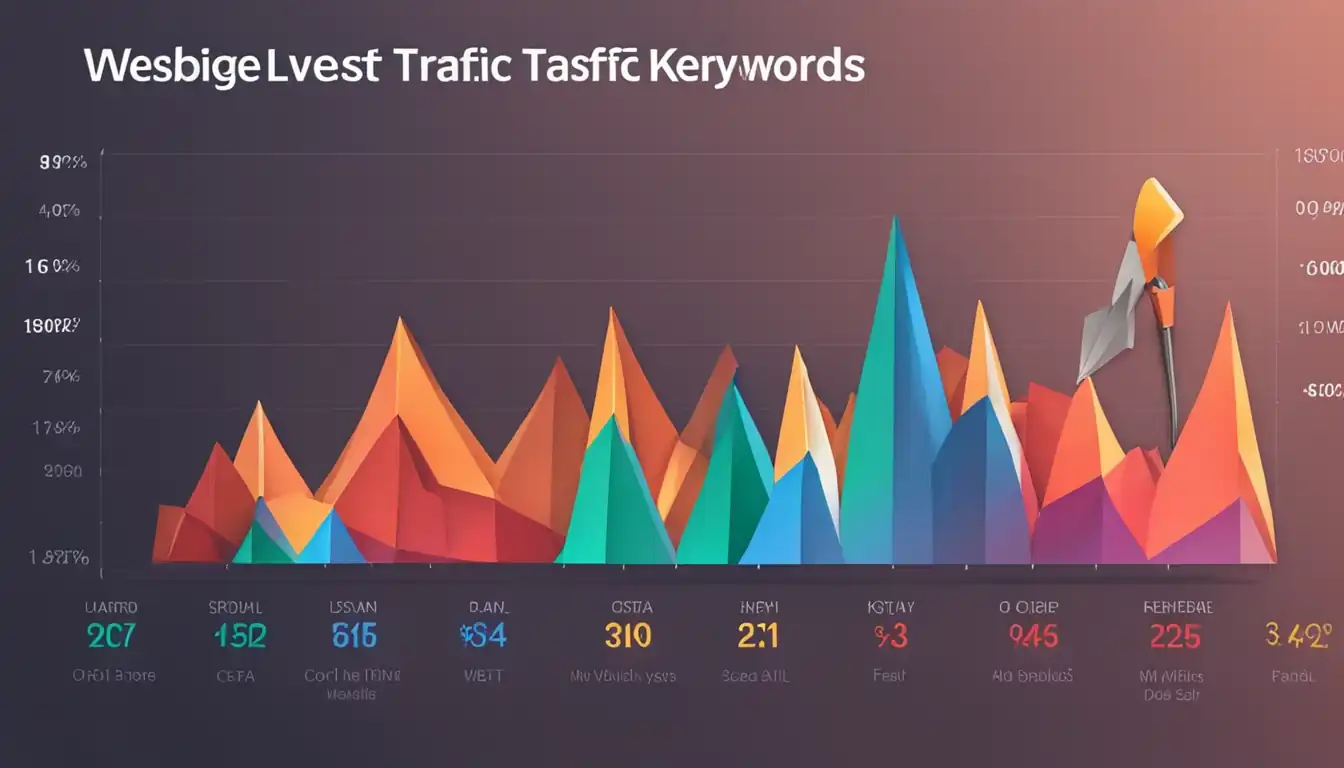Mastering Long-tail Keyword Targeting for Enhanced SEO Performance

In the vast world of SEO, mastering long-tail keyword targeting can be the key to unlocking enhanced performance for your website. Long-tail keywords may not be the flashy celebrities of the search engine world, but they pack a powerful punch when it comes to driving targeted traffic and boosting your rankings. Let's dive into how you can harness the potential of long-tail keywords to take your SEO game to the next level.
Understanding Long-tail Keywords

What Are Long-tail Keywords?
Long-tail keywords are specific and longer keyword phrases that typically have lower search volume but higher conversion rates. These keywords are more targeted and specific, catering to a niche audience searching for very particular information or products.
Why Focus on Long-tail Keywords?
- Less Competition: Long-tail keywords have less competition compared to broad keywords, making it easier to rank higher in search engine results.
- Higher Conversion Rates: Since long-tail keywords are more specific, they attract users who are closer to making a purchase decision, resulting in higher conversion rates.
- Better Targeting: By focusing on long-tail keywords, you can better target your audience and provide them with the exact information or product they are looking for.
- Improved SEO Performance: Incorporating long-tail keywords into your content strategy can improve your overall SEO performance by driving targeted traffic to your website.
The Benefits of Targeting Long-tail Keywords

Improved Search Engine Rankings
Targeting long-tail keywords can significantly improve your search engine rankings. These keywords are more specific and less competitive, making it easier for your content to rank higher in search results. By focusing on long-tail keywords, you can attract more targeted traffic to your website and increase your visibility online.
Higher Conversion Rates
Long-tail keywords are often used by users who are further along in the buying process and have a clearer idea of what they are looking for. This means that targeting these keywords can lead to higher conversion rates as you are reaching an audience that is more likely to make a purchase or take a desired action. By tailoring your content to match the intent behind long-tail keywords, you can attract qualified leads and improve the overall performance of your SEO strategy.
How to Identify Effective Long-tail Keywords
Long-tail keywords are longer, more specific phrases that users type into search engines. They typically have lower search volume but higher conversion rates compared to short-tail keywords. Here's how you can identify effective long-tail keywords for your SEO strategy:
Tools and Techniques for Finding the Right Keywords
- Google Keyword Planner: This tool provides insights into keyword search volume, competition, and potential bid prices for paid advertising.
- SEMrush: A comprehensive SEO tool that offers keyword research, competitor analysis, and backlink tracking features.
- Ahrefs: Another powerful SEO tool that helps you discover new keyword opportunities and analyze competitor strategies.
- Keyword.io: This tool generates long-tail keyword suggestions based on seed keywords, making it easier to expand your keyword list.
When conducting keyword research, consider factors such as search volume, competition level, and relevance to your target audience. Look for long-tail keywords with moderate search volume and low competition to maximize your chances of ranking well in search results.
Analyzing Competitor Keyword Strategies
Analyzing your competitors' keyword strategies can provide valuable insights into which long-tail keywords are driving traffic to their websites. Here are some steps to help you analyze competitor keyword strategies effectively:
- Identify Your Competitors: Start by identifying who your main competitors are in the industry or niche you operate in.
- Use SEO Tools: Utilize tools like SEMrush or Ahrefs to analyze your competitors' top-ranking keywords and organic traffic sources.
- Look for Gaps: Identify any gaps or opportunities where your competitors may not be targeting specific long-tail keywords that are relevant to your business.
- Monitor Changes: Keep track of any changes in your competitors' keyword strategies over time and adjust your own strategy accordingly.
By analyzing competitor keyword strategies, you can gain a competitive advantage in the search engine results pages (SERPs) and improve your overall SEO performance.
Crafting Content Around Long-tail Keywords

Long-tail keywords are specific keyword phrases that typically have lower search volume but higher conversion rates. Mastering the art of targeting long-tail keywords can significantly enhance your SEO performance and drive more qualified traffic to your website.
Integrating Keywords Naturally into Your Content
When incorporating long-tail keywords into your content, it is crucial to ensure that they are seamlessly integrated in a natural and organic manner. Avoid keyword stuffing, as this can negatively impact the readability of your content and lead to penalties from search engines.
To integrate long-tail keywords effectively, consider the following strategies:
- Use long-tail keywords in headings and subheadings: Incorporating these keywords in your headings can help search engines understand the context of your content.
- Include long-tail keywords in meta tags: Meta titles and descriptions are valuable real estate for including long-tail keywords.
- Sprinkle long-tail keywords throughout your content: Use variations of your target keyword naturally throughout your content to signal relevance to search engines.
Balancing Keyword Density and Readability
Finding the right balance between keyword density and readability is essential when optimizing for long-tail keywords. While it is important to include your target keyword multiple times in your content, over-optimizing can have adverse effects on user experience.
Here are some tips for maintaining a healthy balance:
"Focus on creating high-quality, engaging content that provides value to your audience while strategically incorporating long-tail keywords."
- Monitor keyword density: Aim for a keyword density of 1-2% to avoid keyword stuffing.
- Prioritize user experience: Ensure that your content flows naturally and is easy to read, even with the inclusion of targeted keywords.
- Optimize for semantic search: Consider related terms and synonyms that align with your long-tail keyword strategy to improve relevancy.
By crafting content around long-tail keywords and striking a balance between keyword optimization and readability, you can elevate your SEO performance and attract qualified traffic to your website.
Measuring the Impact of Long-tail Keyword Targeting
Long-tail keyword targeting is a powerful strategy that can significantly enhance your SEO performance. However, to truly master this approach, it is essential to measure its impact and make data-driven decisions.
Tracking Your SEO Progress
Tracking your SEO progress is crucial to understanding the effectiveness of your long-tail keyword targeting efforts. By monitoring key metrics such as organic traffic, keyword rankings, and conversion rates, you can gain valuable insights into how well your strategy is performing.
Key Metrics to Track:
- Organic Traffic: Monitor the amount of traffic coming to your site from search engines.
- Keyword Rankings: Keep an eye on where your targeted long-tail keywords are ranking in search results.
- Conversion Rates: Measure how many visitors are taking desired actions on your site, such as making a purchase or filling out a form.
Tools for Tracking SEO Progress:
- Google Analytics: Provides detailed insights into website traffic and user behavior.
- SEMrush: Offers comprehensive SEO tools for tracking keyword rankings and competitor analysis.
- Ahrefs: Helps monitor backlinks, keyword rankings, and overall site performance.
Adjusting Your Strategy Based on Analytics Data
Once you have gathered data on your SEO progress, it is important to analyze this information and make informed decisions about adjusting your long-tail keyword targeting strategy.
Steps for Adjusting Your Strategy:
- Identify underperforming keywords: Look for long-tail keywords that are not driving significant traffic or conversions.
- Optimize content: Make improvements to existing content by adding more relevant long-tail keywords or updating meta tags.
- Experiment with new keywords: Test out different long-tail keywords to see which ones resonate best with your target audience.
- Monitor results: Continuously track the impact of these adjustments on key metrics to gauge their effectiveness.
In conclusion, mastering long-tail keyword targeting requires diligent tracking of SEO progress and strategic adjustments based on analytics data. By following these steps, you can optimize your content for enhanced SEO performance and drive more targeted traffic to your website.